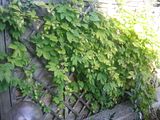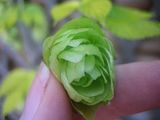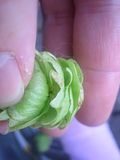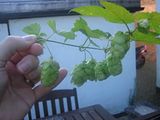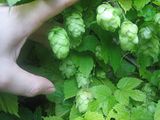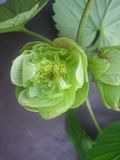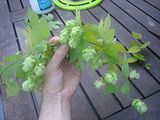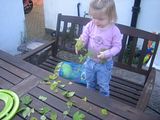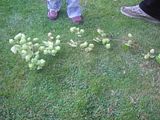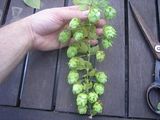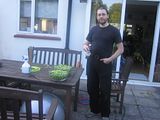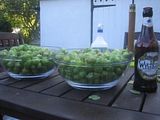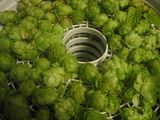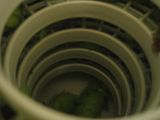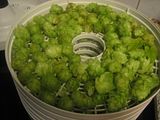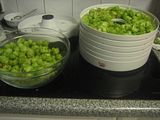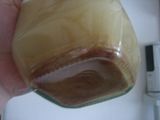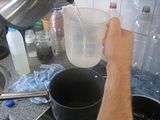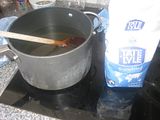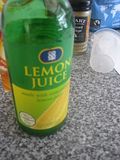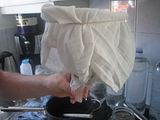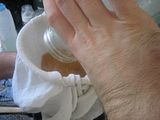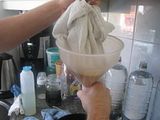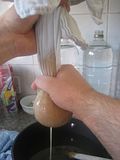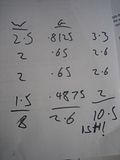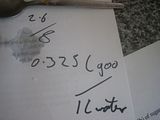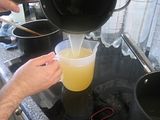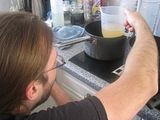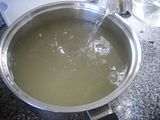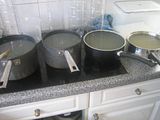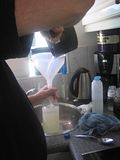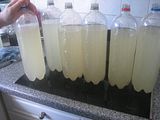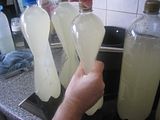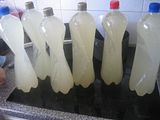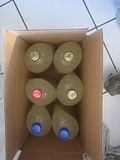After buying a copy of The Hairy Plug Monster for Abigail for her 2nd birthday (absolutely wonderful book, go buy it now! ;) ) , I saw on the author's blog the recipe for a Ginger Ale Plant.
I was completely intrigued, so went ahead and gave it a bash. Ginger Beer was a favourite drink of mine although I used to combine it with copious amounts of whisky. Nowdays I tend not to drink at all so haven't purchased any ginger beer in a while. I am really looking forward to drinking this.
You can view the full tweaked recipe here in Word or PDF
Making the Plant
In the jar, place one teaspoon of dried yeast, two teaspoons of dried ginger, four teaspoons of sugar and a pint (600ml) of cold water. This creates a yeast culture.
Stir and keep at room temperature.
Feed the plant every day with two teaspoons of dried ginger and four teaspoons of sugar. Stir after feeding. The plant will be ready after one week.
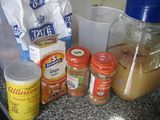
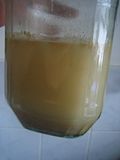
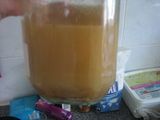
We had a little fizzing and whistling during the week from gas trying to escape when the lid hadn't been put back on correctly.
Ready to go plant :)
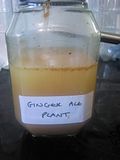
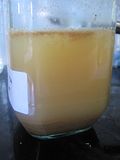
Making the Ginger Ale
Place 1kg (2lb) of sugar and two pints of boiling water in the large pan. The sugar will dissolve.
Add the lemon juice to the pan.
Strain the contents of the jar - the plant - through the cloth into the pan.
Add 14 pints of room temperature water. We'd filled our empty bottles with tap water and left them to stand to make sure they were room temperature. Due to having small saucepans, we had to do a bit of rudimentary maths to try and get an even distribution of 'goo' to water.
Stir the mixture and transfer to the bottles. Fill the bottles about seven-eighths full as you need to allow for expansion
Squeeze the air out of the bottles to stop them exploding under pressure from their contents
Store the bottles in a safe place at room temperature, and leave for three to four weeks to 'brew'. We've got ours in a tall box, with a heavy book on the top 'just in case' (finally finding a use for my Certificate in Management ;) ) This box is hidden underneath my sewing table.
After two weeks, slowly open each bottle to release a little of the pressure and reseal to continue brewing.
Discard half of the solid from the plant or give it to someone so they may start their own.
Place the remaining half in a clean jar with a pint of water and continue to feed as above and start the whole process over again.
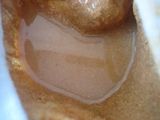
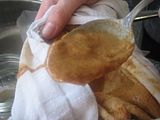
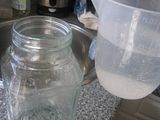
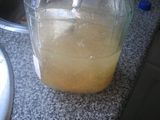
Once the ale has brewed, make sure to open the bottles very slowly to ensure the gas releases gently before drinking
I can't wait to blog about the results! :)
